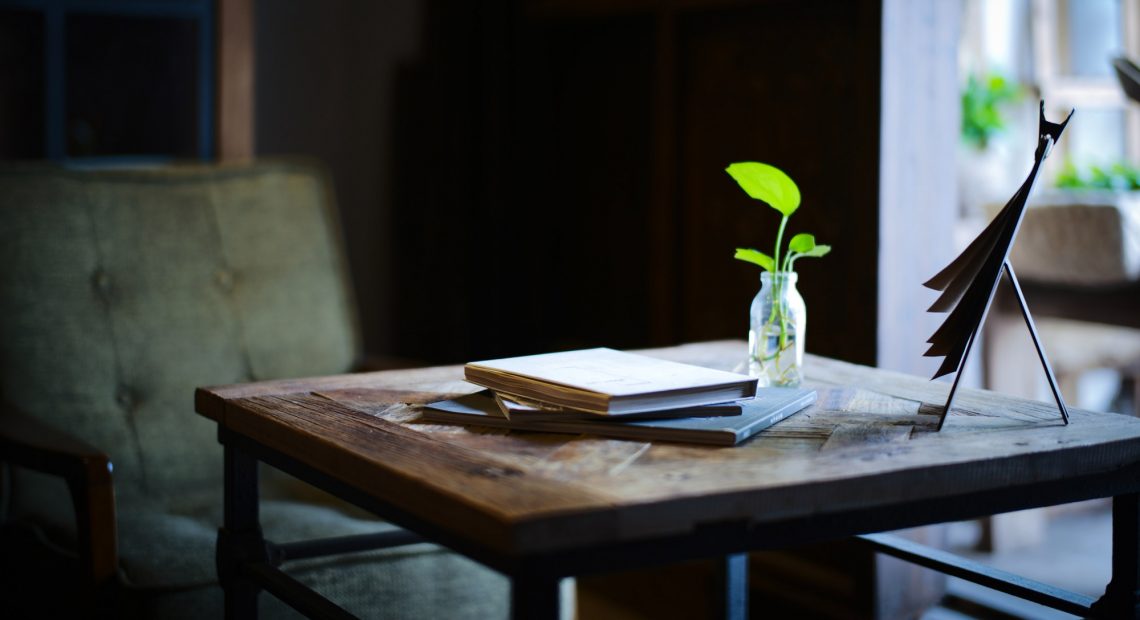
Bathtubs, Desks and Coffee Shops: Shaping Your Writing Space
Adapted from my book: Writing through the Fog
What does the ideal room look like? Is there music? Is there silence? Is there chaos outside or is there serenity outside? What do I need in order to release my imagination?
~ Toni Morrison
(Scroll down to see some famous authors at work in some not-so-usual spaces.)
Get comfortable and spend a few minutes considering your ideal writing space. Is it a cozy corner of your home? Maybe you prefer an office three blocks away where you can shut out the world. What about a clear desk in an empty room? Is there a window? An overflowing bookcase? An aging cat to keep you company (as mine is doing now)? Or, maybe you’re someone who needs the almost-hush of a library or the buzz and jangle of a coffeehouse or diner. Perhaps you need to write outside in a park or underneath a drooping tree beside a river.
Working at Home
If you know that you do your best writing at home, create a space that’s uniquely you and entirely yours. Even if there’s only one small corner or nook with room enough for a desk or comfortable writing chair, you can turn it into your ideal writing space. First, though, decide what that means to you – a desk with fresh flowers in a vase? books spilling from every available surface? framed art from your children on the wall? an open window filled with light? colorful curtains and a stained-glass desk lamp? photos from your recent trip to Graceland? a bare desk and white walls? Whatever it is that speaks to you, that delights your senses, make sure you allow it to flourish in your writing space. Then, dedicate a part of every day to spending time there. Decide how often and for how long you plan to write, and post a calendar on the wall. Then, mark off each day you stick to your schedule. You can plan a reward for each week or month with no missed days.
Coffee Shops and Hidden Brooks

But what if you write your best words somewhere else, somewhere outside your house? Of course, you have to work in the place that calls out to you, the place where you can most easily find you muse, but stick to a schedule. If you use your commute to and from work, then you’ve already got a ready-made schedule built into your days, but if you want to write anywhere else, you may have to push past your brain’s protests and whining to get yourself out the door. If you prefer coffee shops, plan to spend a few hours each day with a cup of joe and your manuscript. If there’s a hidden brook that always seems to spark your creativity, spend as much time listening to the babbles, rustling leaves and bird calls as you can. Like the recommendation above, post a calendar and mark off each day you reach your goal.
Comfort is King (or Queen)
Wherever you decide to write, make sure that it’s comfortable for you. If you have physical limitations, alter your workspace to provide everything you need to have a relaxed and pleasant writing session. Roald Dahl was wounded in WWII and so crafted a wing-back chair with a burrowed out cushion to accommodate his back injury. He wrote on a homemade lap desk and kept everything he needed within reach – extra pencils, electric sharpener, notes and files, memos, a telephone…. What do you need to write comfortably? Notice whether your chair is too soft or firm. Make sure it’s at the right height and angle. That goes for the height of your desk or table, as well.
 I’ll admit, I rarely work at a desk anymore, simply because the couch causes me less fatigue and pain (though I do sometimes work at the kitchen table, especially in the summer months, since it’s near the air conditioner). Like Roald Dahl, Robert Frost composed masterpieces on a lap desk while sitting in a comfortable chair, as does Louise Erdrich, and Truman Capote claimed to be unable to think at a desk, at all; he preferred lying on the sofa. Victor Hugo and Virginia Woolf often wrote at standing desks, as did Ernest Hemingway, Rita Dove and Saul Bellow, from time to time. Screenwriter Dalton Trumbo actually composed while in the bathtub, his manuscript in front of him on a tray! Other authors have written from their beds: Marcel Proust, Edith Wharton, James Joyce, even Mark Twain. On days when the physical fatigue is extraordinary, I may prop up pillows and write in bed, alternately napping and working as I feel up to it. Just take care of yourself and don’t make writing any more difficult than it has to be.
I’ll admit, I rarely work at a desk anymore, simply because the couch causes me less fatigue and pain (though I do sometimes work at the kitchen table, especially in the summer months, since it’s near the air conditioner). Like Roald Dahl, Robert Frost composed masterpieces on a lap desk while sitting in a comfortable chair, as does Louise Erdrich, and Truman Capote claimed to be unable to think at a desk, at all; he preferred lying on the sofa. Victor Hugo and Virginia Woolf often wrote at standing desks, as did Ernest Hemingway, Rita Dove and Saul Bellow, from time to time. Screenwriter Dalton Trumbo actually composed while in the bathtub, his manuscript in front of him on a tray! Other authors have written from their beds: Marcel Proust, Edith Wharton, James Joyce, even Mark Twain. On days when the physical fatigue is extraordinary, I may prop up pillows and write in bed, alternately napping and working as I feel up to it. Just take care of yourself and don’t make writing any more difficult than it has to be.
EXERCISES
Dream Space
Take time to visualize your dream writing space. This doesn’t have to be an attainable space. Maybe you picture yourself writing alone in a turret at the top of a long circular staircase with a butler to bring you tomato sandwiches and espressos. Maybe you’d prefer writing while looking out a café window onto a bustling New York City street corner. This is your dream space, so anything goes.
Now, read over what you’ve written. Does it say anything about you? Are you alone in a room? Are you out and about with people? Are you surrounded by nature? Are there ways you can pull some of the elements of your dream space into your actual writing space? In the turret example, you might sequester yourself in a room, the higher the better. In the street corner example, you might take your notebook with you to a busy restaurant or department store café.
Sample
If you’re not sure where your writing flows best, try writing wherever you happen to be – at the mall, in the kitchen, on a bus, in the waiting room of a doctor’s office, at a sympathetic friend’s house…. You’ll never know whether a place will click with your writing mind until you give it a chance.
Ergonomics

Consider your physical body. Does writing at a desk keep you alert or does it cause aches and pains? Is there a comfortable chair in your living room that offers a view of the playground across the street? Can you put a board across the chair’s arms to hold all your writing paraphernalia comfortably? How does it feel? Is your couch or bed conducive to writing? Is your desk or table the right height? Your chair? If not, see what can be done to fix it or search out one that fits you. If money is tight (ah, the writing life), take a trip to a second-hand shop. You’ll find all sorts of office furniture both old and new to try out.
Customize It
Once you have your space, spend some time personalizing it. If you work best in a spare, almost barren, area, clear away the clutter, consider painting the walls a color you adore, and you’re set. If you’re like me, though, you want to scatter things around that are meaningful and inspiring. If you’ve been published, keep framed copies of your articles or the cover of a book you’ve written nearby. Did your son make you an ashtray in second grade (even though you’ve never smoked)? Do you have special stones or acorns or feathers that you’ve gathered on nature walks? Is there a painting you could frame a copy of? (I’ve cut up quite a few art books so that I could frame my favorite paintings and drawings on the cheap.) Is there something you could display that reminds you of why you’re writing in the first place? Don’t skip over this step. Make this space your own.
Famous Authors at Work in All Sorts of Spaces
You May Also Like

Your Customized MFA: Getting Started
September 20, 2018
Swoopers and Bashers: Editing While You Write
August 23, 2018






One Comment
Pingback: